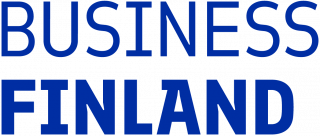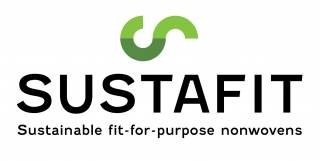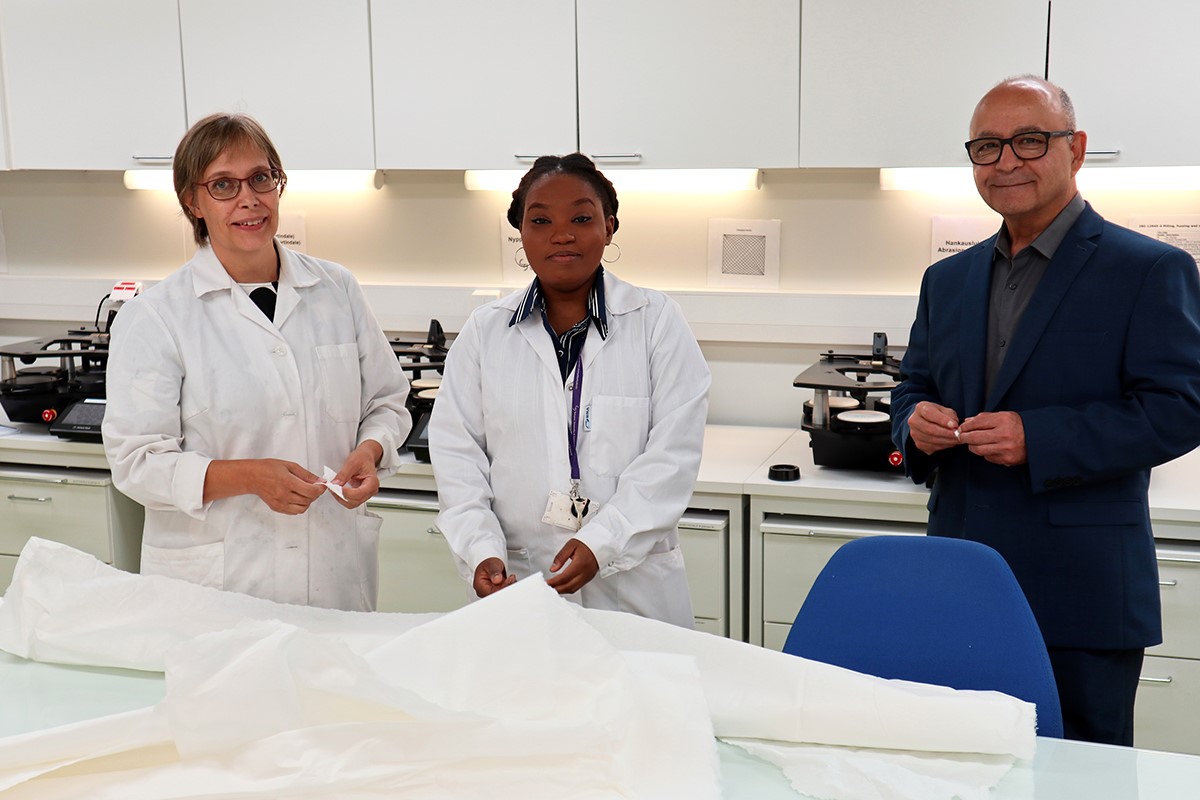The lecture was organized by SUSTAFIT project. Principal Lecturer Ulla Häggblom from Tampere University of Applied Sciences described Behnam Pourdeyhimi as a true expert, an influencer, and a widely recognized leader in the field of nonwovens. In his lecture, the Professor introduced nonwovens, presented the state of the industry, and described where are we now.
The Nonwovens Institute (NWI) is a university-wide research institute located at North Carolina State University in the United States. For 32 years, they have supported nonwoven and affiliated industries with research, training, and product innovation. The operations are aligned with the industry. The institute serves over 100 companies from small to large, and trains more than 300 professionals annually.
“Nonwovens are more than engineered fabrics”
What are nonwovens then? Nonwovens can be found everywhere, from diapers to tennis balls. They have several key differentiators with textiles. Nonwovens offer the possibility to produce highly engineered and customized products to deliver specific performance efficiently from fabric formation to assembling of products.
“Nonwovens are manufactured by high-speed, low-cost processes – in large volumes, and typically lower cost than traditional processes. Nonwoven manufacturing is fully automated, and the labor cost is a fraction of the total cost, thus making the fabrics cost-effective”, said Professor Pourdeyhimi.
“Nonwovens are the best kept secret…”
The nonwovens were created by the industry need. Basic economic drivers led to the development of alternative process technologies for manufacturing fabrics that gained significant momentum during the latter half of the 20th century.
“Historically there have been multiple drivers. The original need was to reclaim acceptable quality fibers from clothing, scraps, and other textiles. The need to convert coarse or long fibers into economically viable products and the need to utilize fiber waste profitably led to the idea of converting fibers into webs.”
It has gone far beyond that. After World War II, the medical application was the driver, and the industry grew.
“If you go the any hospital in the US, Europe, and many other places around the World, you find nonwovens in critical applications. The problem with consumer products is that often they are made from a multitude of materials and are designed to deliver specific functions. Therefore, it is difficult to recycle them.”
The industry uses a number of web-forming processes from the more traditional carding technology to direct formation of fabrics from polymers. The nonwoven manufacturing process includes forming a web, web consolidation, and bonding. The flow is very flexible; you can make different products, light or heavy, big or small. The raw materials can be staple fibers, short-cut fibers, or polymers in the form of pellets or powders.
Professor Pourdeyhimi describes the nonwoven industry as highly innovative.
“Many of the innovative companies even design and build their own machinery for forming the base nonwoven as well as converting them into products. The processes are fully automated and run at high speed. For example, it is possible to produce more than 16 000 diapers per minute. The next step in our evolution is cyber-manufacturing – AI, machine learning, and fully autonomous machinery.”
There is a wide range of nonwoven products in a wide range of applications
The nonwovens are used in thousands of products, oftentimes in behind which you cannot see. Examples of short-life products are absorbent hygiene, medical products, wipes, air and liquid filtration. Their lifespan can be from minutes to hours to days.
Long-life, durable products are, among others, automotive, geosynthetics, interlinings, shoe and leather goods, coating and laminate substrates, floor coverings, furnishing and bedding, and building construction products. The short-life products are dominated by polypropylene, and the long-life by polyester.
The dynamic industry has grown significantly – and it continues to grow
The nonwoven industry is big business. The world production in 2020 was over 17 000 tonnes. It is estimated to be over 20 000 tonnes in 2025. Hygiene sector is largest by volume. The biggest players are the US, China, and Europe, and the biggest markets are in Asia.
“The growth in the industry has been amazing. Europe has shrunk, but China is still on a growth track. The Chinese are very innovative in identifying new applications every day.”
The growth of the nonwoven industry is due to the expanding product markets, which encouraged continued developments in the process technologies, as well as in the raw material and final product design, to meet the existing as well as unmet challenges in product performance at an acceptable cost.
What about the sustainability of nonwovens?
Because of the way nonwovens are produced, their carbon footprint is extremely low compared to the textile industry, and the processes generate little or no waste. The industry uses a lot of materials and produces enormous amounts of products. Medical products are normally incinerated but the challenge is “unmanaged waste”.
Nonwoven products are not designed to be tossed away and can create an environmental problem like many other industries like packaging, textiles, etc. The concern over sustainability is not new to the nonwoven industry, and the industry as a whole has been working diligently to reduce waste, design products for ease of disassembly when made from incompatible materials, and advance chemical recycling.
“The segment that is going to be impacted the most is the wipes because of the EU directive. However, there are emerging technologies that can create a biotransformation and by incorporating these into polypropylene, the material becomes biodegradable. Avgol and FiberVions, a division of Indoroma Ventures, LLC, won an innovation award related to this technology”. He continued:
“We can create really cool nonwovens, but we need to have a global policy. We all must agree on what the problem is. We must first resolve the issue of unmanaged waste globally. The governments have a big role in this. If you ban something, you should have something to replace it with”, stated Pourdeyhimi.
He reminded also of proper labeling which we currently don’t have.
“The labeling can be confusing to consumers. The labels say that the product is compostable, and people put them in compost. It should say industrially compostable, but customers don’t know what that means. ”
Are nonwovens a source of microplastics?
The Professor’s answer is straightforward.
“If you take a baby diaper and throw it to the ocean it creates microplastics, or any other textile or packaging materials we have. In a landfill, polypropylene just sits there for hundreds of years and it will not create microplastics. The problem is unmanaged waste. A big solution will be advance chemical recycling where you can chemically separate materials from each other and create the base monomer that formed the polymer in the first place.”
Professor Pourdeyhimi comes back to the role of governments.
“Without a global policy that includes the greater Asia – where most of the unmanaged waste is generated – we alone cannot have a significant impact on the environment. We should take responsibility for waste management.”
Nonwovens have challenges to tackle, but they represent an interesting class of materials that have found applications in everyday life. The industry is vibrant, competitive, and innovative, and new applications emerge daily. Next time you put your kettle on in the morning, please give a thought to the nonwovens that you will surely meet during the day.
SUSTAFIT is a research project carried out by Tampere University of Applied Sciences (TAMK), VTT Technical Research Centre of Finland and Aalto University. Project is funded by the participating companies, the research partners, and Business Finland. The two-year project (starting 1st October 2022) is coordinated by TAMK and steered by the industry consortium. SUSTAFIT research project will outline segment specific sustainability strategies around the use of sustainable and recycled fibres, and their processing into non-woven products.
Text and photo: Hanna Ylli



